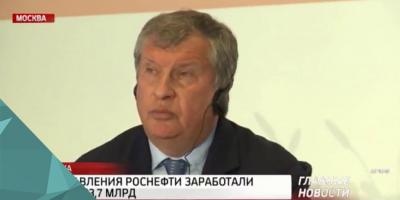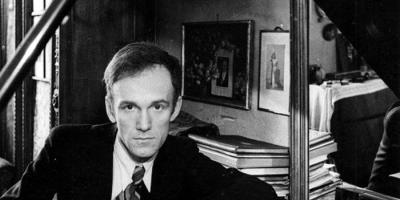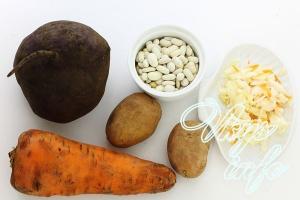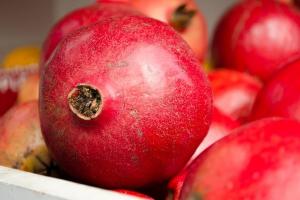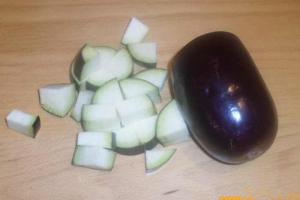In this article: the history of the discovery of polystyrene; production technologies; areas of application of expanded polystyrene; application in construction, GOST standards; properties and characteristics; environmental friendliness, durability and fire safety - is this insulation really safe? what does the term “self-extinguishing polystyrene foam” actually mean? how to choose polystyrene foam
The costs of heating our homes during cold weather are quite significant, and the ever-increasing cost of energy increases these costs year after year. Did you know that in cold weather, heat literally disappears from your home, and the heat loss is not just great - it is colossal! Today most of buildings in Russia, not protected by insulating materials, loses about 600 gigacalories of heat from each square meter, while only 40 gigacalories are consumed per square meter of housing in Germany or the USA. It turns out that homeowners actually pay for heating the street, and not their homes at all... The problem of heat loss can be solved by insulating the walls of the building from the outside with polystyrene foam boards - but is everything so simple with this heat insulator?
History of expanded polystyrene
It all started in 1839, when the German pharmacist Eduard Simon, experimenting with styrax (Liquidambar orientalis resin), accidentally obtained styrene. After experimenting a little with his discovery, the pharmacist found that the oily substance he obtained compacted on its own, turning into a kind of jelly. Simon did not see any practical purpose in the discovery of styrene - he called the jelly-like styrene styrene oxide and stopped further research.
In 1845, styrene became of interest to the chemists Blyth and von Hoffmann - the Englishman and the German conducted their own research, establishing that this substance becomes jelly-like without access to oxygen. The chemists called the jelly-like styrene they obtained metastyrene. 21 years later, French chemist Marcelin Berthelot gave the exact name to the process of compacting styrene - polymerization.

Hermann Staudinger, 1935
In the 20s of the last century, the German chemist Hermann Staudinger made an epoch-making discovery - heating styrene causes a chain reaction, during which long chains of macromolecules are formed. It was Staudinger's discovery that led to the production of polymers and plastics, for which he received the Nobel Prize in 1953.
The first synthesis of styrene was carried out by researchers of the American company The Dow Chemical Company; commercial production of polystyrene was one of the first launched by BASF - in 1930, its engineers developed a technology for the production of polymerized styrene. In 1949, the company received a patent for the production of polystyrene balls foamed with pentane - the idea for this invention belongs to chemical engineer Fritz Stastny. Based on this patent, in 1951 BASF began industrial production heat insulator under the “Styropor” brand, produced to this day.
The raw material for the production of all types of polystyrene insulation is granulated polystyrene; a foaming agent is used to form cells. There are several stages in the technological process of producing expanded polystyrene:
- Polystyrene granules are poured into the pre-expander hopper, where they are inflated and take on a spherical shape. To obtain a heat insulator of lower density, the foaming operation is repeated several times, each time achieving bigger size balls in order to reduce the actual weight of polystyrene foam;
- Each foaming operation is accompanied by the placement of foam granules in a special bunker, where the inflated polystyrene balls remain for 12 to 24 hours. During this period, the pressure inside them stabilizes, and during production by suspension polymerization, they are also dried;
- Upon completion of a specified number of foaming operations and having maintained a curing period, the polystyrene balls are placed in a molding unit, where a polystyrene foam block is formed under the action of hot steam. Pressed into a narrow mold, expanded foam granules under the influence of steam are glued to each other, maintaining their shape after cooling and removal from the mold;
- on last stage Expanded polystyrene blocks, often of impressive size, must be cut to specified sizes. But first, the block from the molding unit is placed in intermediate storage, where it is kept for about 24 hours. The fact is that under the influence of steam, the polystyrene foam block gains excess moisture, and it will not be possible to perform smooth cutting in the wet state of polystyrene foam, because It will not be possible to avoid breaks. After drying, the polystyrene foam block is cut vertically or horizontally with a bench saw.
There are two main methods for producing expanded polystyrene - suspension polymerization and bulk polarization. Suspension polymerization technology is based on the inability of water to dissolve vinyl polymers. At the foaming stage, styrene granules are poured into autoclave reactors with a volume of up to 50 m 3 filled with demineralized water with a polymerization initiator and an emulsion stabilizer dissolved in it. Polymerization takes place under constant pressure, with a uniform rise in temperature from an initial 40 to a maximum of 130 o C - the entire process takes about 14 hours. The foamed polymer is removed from the reactor along with the aqueous suspension, separated from it in a centrifuge, then washed with water and goes through the drying stage. The main advantages of this technology are the constant mixing of polymer granules inside the reactor during polymerization, effective distribution and removal of heat, which results in a significant shelf life of the foamed polymer.
The bulk polymerization technology is carried out differently - there is no water, the polymerization process is continuous and takes place at higher temperatures. In a series of mixer-reactors connected in series with each other, at a temperature from the initial 80 to the final 220 o C, the polystyrene granules foam. Polymerization is considered successful and complete if 80 to 90% of the original styrene is melted. When a vacuum is created in the last column-type reactor, unreacted styrene is eliminated, then flame retardants, dyes, stabilizers and other additives are introduced into the melt, resulting in granulation of the polymer. The unreacted and recovered styrene is used for the next filling. It is extremely difficult to bring the process of polymerization of raw materials to obtain over 90% foamed polystyrene using this technology, because The reaction rate is quite high, and there is no possibility of heat removal.

The production of foamed polystyrene using the suspension polymerization method is more common in Russia and the CIS; in Western and American countries, bulk polymerization technology predominates, which makes it possible to obtain a thermal insulator with higher characteristics in density, flexibility, clarity of boundaries and color, not to mention a lower percentage of waste.
The technology for producing extruded (extruded) polystyrene foam is generally similar to the technology of polymerization. The difference lies in pressing the melt with foaming agents introduced into its composition through a press extruder, resulting in a heat insulator with cells with a diameter of up to 0.2 mm. It is the small cell size that provides extruded polystyrene foam with high operational properties and popularity in the construction industry.
Areas of use
The combination of strength and thermal insulation properties, ease of processing and processing, low cost - thanks to these characteristics, polystyrene foam is widely used in various spheres of our life. Most often this material is used for: packaging of various goods and equipment; isothermal food packaging; production disposable tableware; energy absorbers in the automotive industry; life-saving craft; volumetric outdoor advertising, etc.
The absence of the threat of dust is the main positive difference between polystyrene foam and mineral wool, allows this material to be used for thermal insulation refrigeration equipment in the food industry.
Expanded polystyrene is used for thermal insulation of the road surface, preventing freezing of the base. For this purpose, high-density polystyrene foam grades are used - from 35 kg/m 3 and above. This material is also used for thermal insulation of railway tracks, effectively preventing rails from distorting and subsiding on unstable soils.
One of the first to use polystyrene foam for insulating buildings was the American Huth Haddock. According to him, the idea of thermal insulation of houses arose by accident - Huth ordered a cup of hot coffee in a cafe and suddenly noticed that the hot liquid in disposable cup made of polystyrene does not burn your fingers at all. After conducting an experiment in 1984 - building a house in Alaska and insulating it with polystyrene foam - he became convinced of the effectiveness of polystyrene insulation.
According to GOST 15588-86, it is permissible to use polystyrene foam as an insulating intermediate layer building structures. In the European Union, expanded polystyrene has been successfully used in facade insulation for more than 40 years - expanded polystyrene slabs are glued to the main structural material, be it concrete or brick, from the outside (outside) side, and they are covered with a layer of plaster on top.
As European architects note, the use of expanded polystyrene in facade insulation reduces energy costs for heating threefold.
Plates and blocks made of extruded polystyrene foam are used as permanent formwork and at the same time a heat insulator. The technology used is: polystyrene foam boards are installed at a given distance from each other, connected to each other by a special system of ties, reinforcement bars are placed in the gap between the slabs and concrete is poured. A variety of ready-made blocks made of expanded polystyrene allows you to build facades of complex architecture. On walls assembled from blocks of extruded polystyrene foam and filled with concrete, it is necessary to apply protective covering— on the outside it can be facing bricks or cement-sand plaster, on the inside there are two layers of plasterboard with a “staggered” joint or a layer of plaster. Important condition for formwork made of expanded polystyrene: the density of this material in the formwork blocks must be at least 35 kg/m3.

Adhesive for expanded polystyrene should not contain organic solvents that destroy polystyrene. It is safest to use cement-based adhesives, packaged in 25 kg craft bags and mixed with water - the inorganic components of such mixtures will not have any negative effect on polystyrene. Important point: it is necessary to achieve the largest contact area between the expanded polystyrene slab and the insulated surface (ideally 100% contact area) in order to eliminate air pockets that act as cold bridges and accumulate condensation.
Thermal conductivity
High thermal insulation properties expanded polystyrene is explained by its structure, formed by many balls welded together, which in turn consist of many cells with air enclosed in them. And since the air inside the cells is not able to move, it acts as a heat insulator - a stationary air environment has excellent insulating properties. At its core, expanded polystyrene consists of air - 98% air and only 2% of the original polystyrene.
The thermal conductivity coefficient of this material is lower than that of any other thermal insulator, incl. mineral wool, and is in the range of 0.028-0.034 W/m·K. The thermal conductivity of expanded polystyrene increases with increasing density; for example, extruded polystyrene foam with a density of 45 kg/m 3 has a thermal conductivity coefficient of 0.030 W/m K. Operating temperatures at which polystyrene foam retains its properties are from -50 to +75 o C.
Water absorption and vapor permeability
If we compare extruded polystyrene foam with foam made from the same styrene, but using a slightly different technology, then the vapor permeability of the foam is zero, and extruded polystyrene foam has a vapor permeability of 0.019-0.015 Mg/(m h Pa). The question arises: how is this possible, since the structure of any foamed polystyrene material cannot allow steam to pass through? The reason for the vapor permeability of extruded polystyrene foam, which is denser compared to foam, is that steam penetrates the balls and their constituent cells on its sides, cut during molding, while the molding of foam products is carried out without cutting. With water absorption, the situation is the opposite: polystyrene foam can absorb up to 4% of water when immersed or in contact with it, and extruded polystyrene foam - only 0.4%, which is explained by its greater density.

Closed cell structure of extruded polystyrene foam
Strength
In terms of strength, the undisputed leader is extruded polystyrene foam - its static bending strength is 0.4 - 1.0 kgf/m2, while polystyrene foam is 0.07-0.20 kgf/m2. The bonds between the molecules of extruded polystyrene foam are many times stronger than in the structure of polystyrene foam. Therefore, the production and use of the latter is increasingly being reduced - polystyrene foam is being replaced by a more durable and modern thermal insulator, which is polystyrene foam, obtained by pressing through a press extruder.
Interaction with chemical and organic products
Expanded polystyrene is not affected by: mortars based on gypsum, cement, anhydrite or lime; bitumen resins, caustic soda, soap and salt solutions, mineral fertilizers, groundwater and emulsions used in asphalt paving. They damage, destroy the structure and completely dissolve polystyrene foam in some cases: drying oils, some types of varnishes, organic solvents(turpentine, acetone, etc.), alcohol-containing compounds and petroleum products.
In addition, ultraviolet radiation has a destructive effect on the exposed surfaces of polystyrene foam. sun rays— the surface regularly irradiated by them loses elasticity and strength, followed by destruction of the polystyrene foam structure by atmospheric phenomena.
Sound conductivity
The use of polystyrene foam for sound insulation is only partially effective - with sufficient thickness, this material is excellent for protection against impact noise, but is not able to combat airborne noise, the sound waves of which travel through the air. The inability of expanded polystyrene to dampen airborne noise is associated with the complete insulation of its constituent cells and the significant rigidity of external surfaces.
Biological stability
The vital activity of mold on the surfaces of polystyrene foam boards is impossible - these are the results of laboratory tests in 2004, conducted in the USA at the request of American polystyrene foam manufacturers.
Characteristics of fire safety, environmental friendliness and durability of polystyrene foam
Manufacturers of this thermal insulation material call it extremely environmentally friendly, non-flammable and retains its performance properties for many years. Outwardly, this is what it looks like - the exclusion of freon from the technological process does not harm the ozone layer, the introduction of fire retardants makes polystyrene foam flame retardant, and laboratory tests with dozens of freezing and thawing cycles characterize durability. However, a closer study of polystyrene foam shows a slightly different picture...
Air oxidation of styrene-based materials cannot be completely avoided, and foam plastics have a higher oxidation rate than extruded polystyrene foam - the foam structure has larger balls and less strong bonds. The higher the temperature, the more speed oxidation, while polystyrene foam does not need to burn; the release of toluene, benzene, ethylbenzene, formaldehyde, acetophenone and methyl alcohol occurs during air oxidation at room temperature more than +30 o C. In addition, freshly laid polystyrene foam releases styrene that was not polymerized during the production process. I repeat - 100% polymerization of all the feedstock put into the reactor is impossible.
All types of polystyrene are flammable - from the point of view of the official classification system of building materials, those that lose their original volume when heated in air space are flammable. Statements by manufacturers of any type of polystyrene about its self-extinguishing do not fully reflect the fire characteristics of polystyrene, i.e. information is deliberately distorted.

Most manufacturers of this heat insulator claim that when heated, polystyrene foam emits no more toxic substances than a tree. If when wood burns, toxic chemical substances are released, then this statement is correct - after all, when melted under the influence of heat above 80 o C, polystyrene foam releases into the air a large amount of smoke and soot, containing, among other things, small amounts of hydrobromide (hydrogen bromide), hydrocyanide (hydrocyanic acid) and carbonyl dichloride (phosgene).
So what gives polystyrene foam manufacturers the claim that their product is less of a fire hazard than wood? According to the Russian GOST 30244-94, such a statement would be simply impossible, because this standard classifies materials based on polystyrene foam, as the most flammable, into groups G3 and G4. But in Europe there is a different method for assessing flammability, or rather, there are three of them - biological, chemical and complex. According to the biological methodology for assessing toxicity, the most dangerous material is precisely wood materials— quickly burn with release large quantity CO2 at spontaneous combustion temperatures. But toxicity assessment biological method is given only for a few final parameters, which are not comparable, for example, when comparing the toxicity of combustion products of wood and polystyrene. The situation is exactly the same with calculating toxicity using the chemical method...
The real picture is given only by a comprehensive method, unconditionally applied in Europe to all polymer materials.
However, in Russia, suppliers of European polystyrene foam and local manufacturers show buyers expert opinions only on biological and chemical methods, actively making these data widely public.
Another classic move that allegedly demonstrates the non-flammability of polystyrene: a slab is suspended in the air, a burner flame is directed at it - so the part of the slab where the open flame hits burns out, but the fire does not spread further. What conclusion can be given to polystyrene after watching this video? But none - if the same polystyrene slab is laid on a hard, non-flammable surface, then drops of melt formed when the material burns will spread high temperature and open flame over the entire area of the slab, which will burn completely!
The smoke generation coefficient for polystyrene foam that does not contain fire retardants is 1,048 m 2 /kg, but for self-extinguishing polystyrene foam with fire retardants introduced into its composition, this figure is higher - 1,219 m 2 /kg! For comparison: the smoke coefficient of rubber is 850 m 2 /kg, and wood, with which manufacturers constantly compare polystyrene products, is only 23 m 2 /kg. Since the given values of smoke generation do not explain anything to a non-specialist in matters of fire safety, I will give the following data - if the smoke content in the room is more than 500 m 2 /kg, then absolutely nothing will be visible at arm's length.
The consequences of burning polystyrene are known from the 2009 tragedy that occurred in Perm, in the Lame Horse nightclub - most of those killed in this fire suffocated by the combustion products of the insulation with which they were openly sheathed internal partitions. It should be noted that the club owners saved on insulation by using not extruded polystyrene foam, but packaging foam of lower density, which burns excellently and is not prone to self-extinguishing.
Durability of expanded polystyrene
When purchasing a truly high-quality thermal insulation material, observing all installation requirements, fully covering the outer area of polystyrene foam with a layer quality plaster or decorative panels, its service life will be over 30 years. But these conditions are never actually met 100% - unprofessionalism of installers, attempts by customers to reduce costs, errors in calculations and hope for chance.
A classic miscalculation is the bet on the thickness of expanded polystyrene - they say, if you install slabs 30 cm thick, the thermal insulation effect will increase significantly while simultaneously increasing the service life of the material. In fact, with increasing thickness, the service life of polystyrene thermal insulation will decrease, because significant temperature changes will cause deformation and shrinkage, forming cracks and reducing the area of direct contact of polystyrene foam slabs with the insulated surface, forming large air spaces. In the European Union, the thickness of polystyrene foam used for facade insulation cannot exceed 3.5 cm - this requirement, in addition to issues of thermal insulation durability, is associated with fire safety, because the thinner the polystyrene foam layer, the smaller the amount of combustion products it will release during a fire.
In order to reduce the risk of fire, manufacturers add fire retardants to polystyrene, usually hexabromocyclododexane. In Russia, expanded polystyrene with fire retardants in its composition is marked with the letter “C”, meaning “self-extinguishing”.
By and large, self-extinguishing polystyrene foam burns no worse than materials that do not contain fire retardants.
The question arises - what does the letter “C” mean? And it means that this polystyrene foam will not spontaneously ignite when the temperature rises, nothing more. According to the degree of flammability, self-extinguishing polystyrene foam is assigned class G2, but it is worth considering that during its service life the fire retardant will gradually lose its properties, i.e. after a few years, the actual flammability class of such expanded polystyrene will not be higher than G3-G4.
Criteria for choosing expanded polystyrene
Cheapness and high thermal insulation qualities have made polystyrene-based materials extremely popular in the construction market. And the increase in demand has led to the emergence of many enterprises, vying with each other to offer products of their own production, declaring their exceptional quality.
Be careful when choosing the brand of expanded polystyrene - as a facade insulation, it would be correct to choose PSB-S (self-extinguishing polystyrene foam) of at least grade 40. At the same time, it is worth taking into account the nuance - the manufacturer, within the framework of the specifications developed by him, produces PSB-S-40 with a density in the range from 28 to 40 kg/m 3, and not at all 40 kg/m 3, as an ignorant buyer assumes, focusing on the number in the brand . It is quite natural that it is more profitable for a manufacturer to produce grade 40 with the lowest density, because in this way he earns more, spending less on raw materials. It makes no sense to use grades of expanded polystyrene below 25 in construction - the density of such expanded polystyrene will actually correspond to packaging foam, which is unsuitable for facade insulation due to the rapid loss of performance qualities.

It would be nice to find out which technological process The production of expanded polystyrene is used at the enterprise of this manufacturer. If an enterprise produces expanded polystyrene with a density of more than 35 kg/m 3, then this must be an extrusion method, because without compression during the production process, the highest density of polystyrene will not exceed 17 kg/m3.
You can find out the quality of polystyrene by breaking it - the low-density material (used only for packaging) will break between the balls, their shape at the point of break will be round, and the size will be different. A break in high-quality extruded polystyrene foam will show the polyhedrons of the same size that form it; the break line will partially pass through them.
The right decision would be to purchase expanded polystyrene from well-known European manufacturers “BASF”, “Nova Chemicals”, “Styrochem”, “Polimeri Europa” or domestic ones “Tekhnonikol”, “Penoplex”. The production capacity of these polystyrene foam manufacturers is sufficient to produce a truly high-quality product.
In conclusion
Despite the presence of negative characteristics regarding flammability and combustion products, polystyrene foam is one of the best and, at the same time, inexpensive heat insulators. By enclosing a polystyrene slab between two layers of cement plaster, you can obtain high-quality thermal insulation of buildings and premises - there is no point in denying this fact. In Europe, about 80% of public and residential buildings are insulated along the facade with expanded polystyrene.
Expanded polystyrene as construction insulation has not yet passed the full test of time - no more than 40 years have passed since the first use.
The information widely disseminated by manufacturers about consistent quality over 80 years of operation is based on laboratory tests, which can be influenced - say, by providing a special batch of samples for analysis.
When insulating facades with polystyrene foam, it is extremely important to completely protect the outer surface of this heat insulator with a sufficient layer of plaster on a cement binder - the slightest area of contact of polystyrene foam with the atmosphere and solar ultraviolet will lead to its rapid destruction.
Is it worth insulating with this material? interior spaces- it’s not worth it, despite all the assurances of the manufacturers. They will give guarantees, but what good will it do in the event of a fire...
Rustam Abdyuzhanov, rmnt.ru
For comfort and coziness in the house, it is necessary to insulate the walls, floor, ceiling and insulate the pipeline, as much as the area of the room allows. Nowadays, there is a huge selection of insulation materials that are not only thermal insulation, but also sound insulation. They can be used both outside and inside premises, but for the safety of human health the best option install insulation outside. To do this, it is better to install Izovol, basalt insulation tiles. If you use such thermal insulation from the inside for walls, then after that it needs to be plastered over a reinforcing mesh. You can also use glass wool in rolls for this.
Compared to thermal insulation for walls, floor insulation will provide more savings and heat. In a house or sauna, floor insulation is on wooden blocks can be made from foil or glass wool in a roll. Because these two types are more moisture resistant and provide better thermal insulation.
To pick up best insulation, you should always look at the manufacturer and his reputation. Several manufacturers have proven themselves best in this area. Here are some of them.
Isover glass wool is easy to use, reliable and practical. This is insulation, the price of which fully corresponds to the quality.
Knauf produces its products in the form of slabs; this is the insulation material that is most often used when installing a ventilated facade for a home. It can also be used under floor screed.
Rockwool insulation is produced in several modifications. Namely, facade and universal slabs, as well as foil insulation; reviews say that the latter is ideal for high humidity.
You can also buy glass wool in rolls, but it is best to use specialized material.

